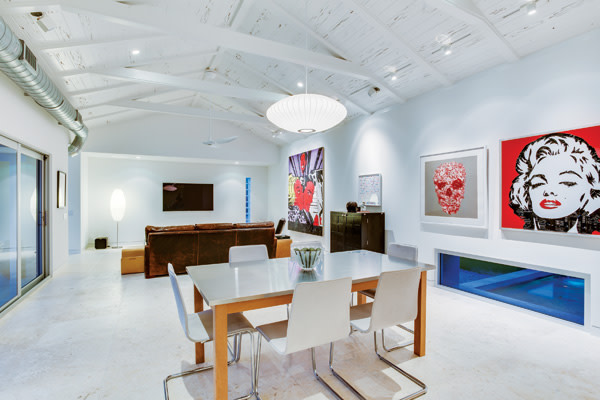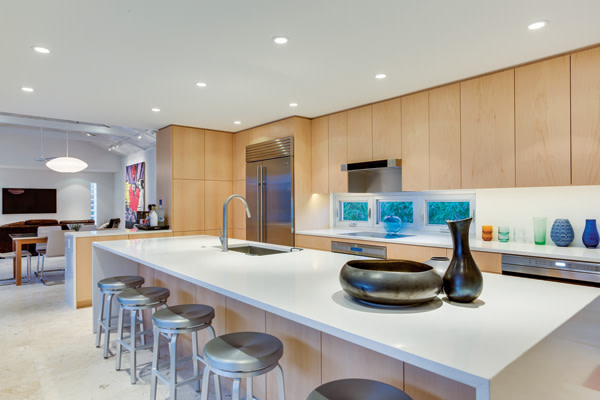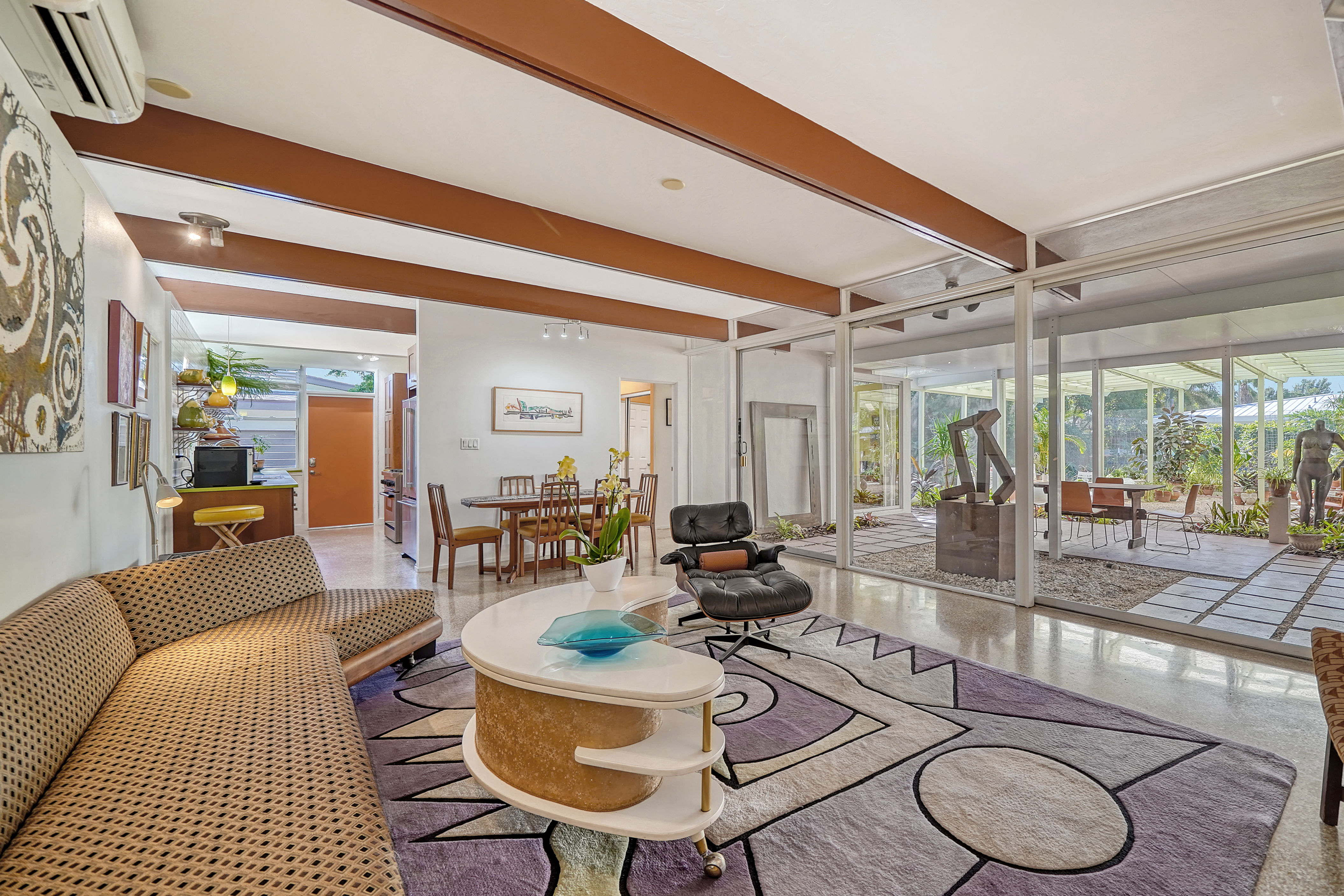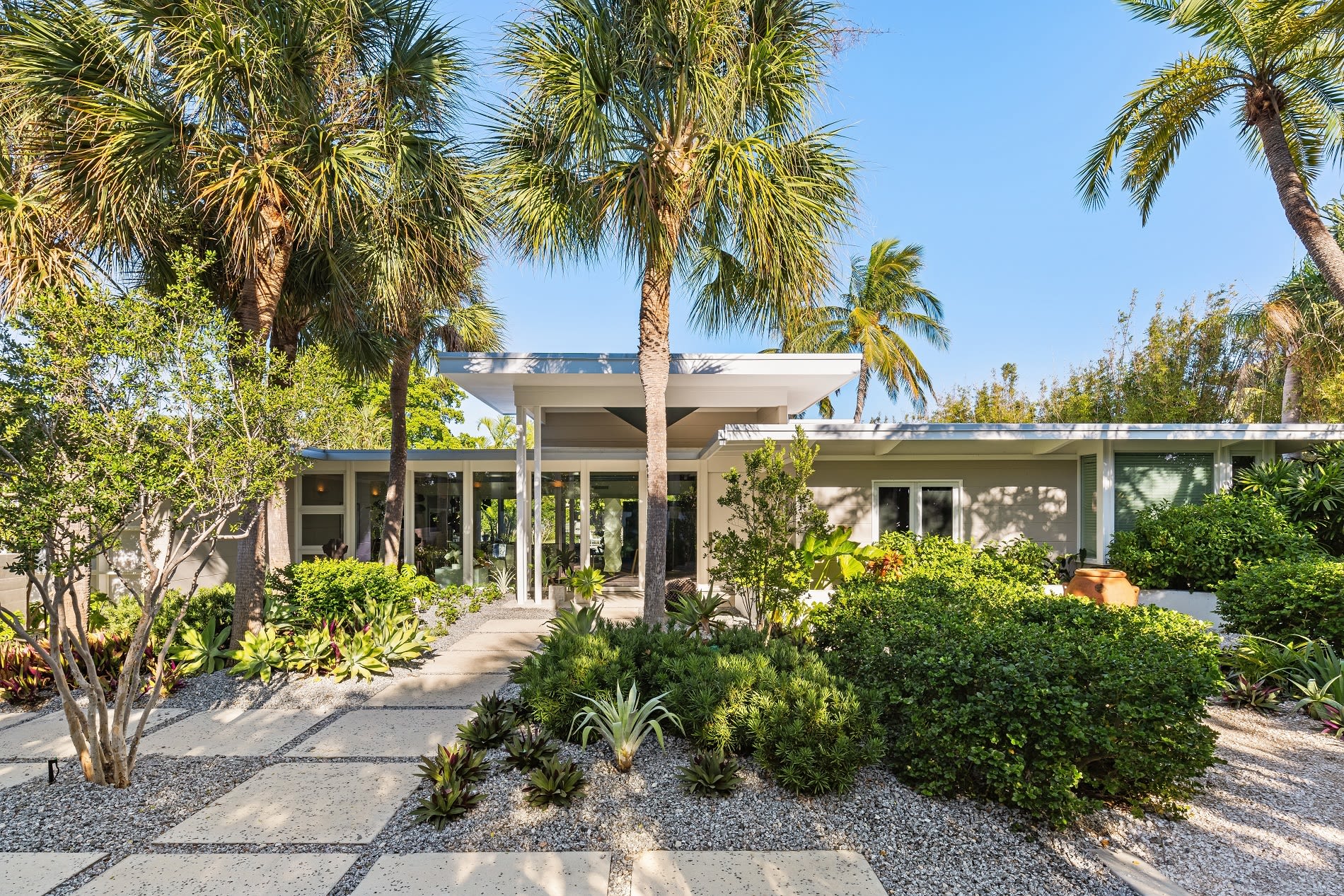Tour a Reinvented Sarasota School of Architecture Home on Lido Shores

Some of Robert Robinson’s neighbors in architecture-obsessed Lido Shores were convinced that the nondescript 1960s-era home he’d lived in since 1999 had been demolished and replaced with a sleek Sarasota School of Architecture-inspired residence. That’s how dramatic the renovation of the Robinson home was.
The 1,977-square-foot home was built in 1962 for a pair of writers who used it for decades both as their residence and their atelier. The horseshoe-shaped floor plan—the front foyer opens onto an outdoor courtyard and pool, then to the right is the private bedroom wing and to the left is the public wing with living room, dining room and kitchen—was well thought out, but it lacked the architectural pedigree that makes Lido Shores the hub of the Sarasota School of Architecture. Robinson, an art broker, was only its third owner, and when he bought it 16 years ago, it was in decline.

“My friends thought I was absolutely crazy,” he says. With the goal of remodeling and flipping, he replaced the jalousie windows and roof, gutted the kitchen and reworked the baths, with creating an easily sellable “beachy feel” his end goal. But the idea of flipping it soon flew out the window. “I just fell in love with the house,” he says. “Had I known back then that I was going to stay I would have remodeled it with a more modern sensibility.”
Years passed, and the influx of newcomers to Lido Shores bent on preserving many of its original iconic residences—Paul Rudolph’s Umbrella House, William Rupp’s Pavilion House and Tim Seibert’s Hiss Studio among them—solidified Robinson’s desire to keep and improve his little house. He reached out to the office of Guy Peterson, FAIA, and project designer Joe Kelly, associate AIA, asking them to rectify three big problems.

First, one had to walk through the master bedroom, closet and master bath to access the remaining bedroom in the north, private wing. (The original owners had paneled that bedroom, added built-in bookshelves and used it as their writing studio.) Kelly “captured” courtyard space to create an indoor hallway all the way down the length of the private wing with walls of glass that look out onto the pool. Besides solving the circulation dilemma, the hallway acts as a gallery for the contemporary art that Robinson has been collecting since he moved into the home 16 years ago.

Second, the original kitchen was dark, minuscule—“enclosed and mazelike,” project designer Kelly says. He doubled its size by opening it up to the other public spaces and added modern materials, such as light maple cabinets and white quartz countertops. And, third, the home only had a single-car garage. Kelly pushed out part of the south, public wing to create a much bigger two-car garage along with a pool bath/powder room and new laundry room.
The enclosed private wing hallway and new garage area added just over 600 square feet to the house, keeping it perfectly in scale with other, non-waterfront homes in the neighborhood.

The most dramatic change occurred outside. The exterior walls got a coat of stucco and were painted an adobe color. The entryway—once so hidden behind foliage that guests would wander to the back door in confusion—was demolished and rebuilt to give it a striking view all the way through the foyer to the pool. “Now it has a presence,” says Kelly. “You’re stepping into a shadow-box form.”
Both the homeowner and project designer were especially pleased that Robinson’s art collection, which wasn’t able to shine in the old house, now takes center stage, thanks to the monochromatic design scheme—white walls, off-white Philippine shell stone floors, light maple cabinetry.

“This renovation touched every square inch of the house inside and out,” says Kelly. “Everything was pushed and pulled and reinvented.”
Kelly tips his hat to Robinson, who wanted to remodel rather than tear down. “It’s rare these days for a remodeled home to retain its original proportions,” he says. “It has such character to it; if you do tear it down, you have to go up in the air and then everything gets out of scale.”
DESIGN TEAM
Architect
Guy Peterson, FAIA
Guy Peterson | OFA
Project Designer
Joe Kelly, Associate AIA Guy Peterson | OFA
Interiors and Lighting Design
Joe Kelly, Associate AIA
Guy Peterson | OFA
Landscape Design
Joe Kelly, Associate AIA
In collaboration with Grant Beatt
Contractor
Dean Thompson, Dean Thompson Inc.;
Brian Keith, Project Manager



